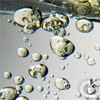Why Effective Demulsifier Treatment Depends on Your Demulsifier Selection
 The role of a demulsifier is not something commonly discussed over dinner. But in the petroleum industry and water treatment facilities, it is a key component in their operation. Having an effective demulsifier treatment process can save millions of dollars every year in operation costs – but only if the right demulsifier is chosen for the job.
The role of a demulsifier is not something commonly discussed over dinner. But in the petroleum industry and water treatment facilities, it is a key component in their operation. Having an effective demulsifier treatment process can save millions of dollars every year in operation costs – but only if the right demulsifier is chosen for the job.
Choosing the Right Demulsifier
It is important to note that an effective demulsifier treatment depends on a number of factors, not least the strength of the demulsifier. If the emulsions are not very stable, a demulsifier can prove very effective, but if the level of stability is high then it can be very difficult for the emulsion breakers to get their job done.
There are 5 key factors that dictate just how stable the emulsion is, and therefore how strong the demulsifier needs to be. These are:- Crude Oil Physical, Chemical Properties
- Production Temperature
- Distance Between Reservoir and Topside
- Reservoir and Separator Agitation (Turbulent Flow)
- Presence of Solid Contaminants
The Demulsifier Range from Velocity Chemicals
At Velocity Chemicals, we provide a range of demulsifiers and specialty chemicals specifically designed for separating crude oil and water emulsions that can occur during crude oil production and processing.
Our selection of specially formulated demulsifiers are ideal for oil and gas production systems and desalting units, and can also reduce residual hydrocarbon content in water to acceptable levels for disposal. And because of our experience in the field, and expertise in the laboratory, we can formulate emulsion breakers to the precise blend to ensure the most effective demulsifier treatment wherever it may be used.Tags: Demulsifier, Emulsions, Industry, Oil, treatment




